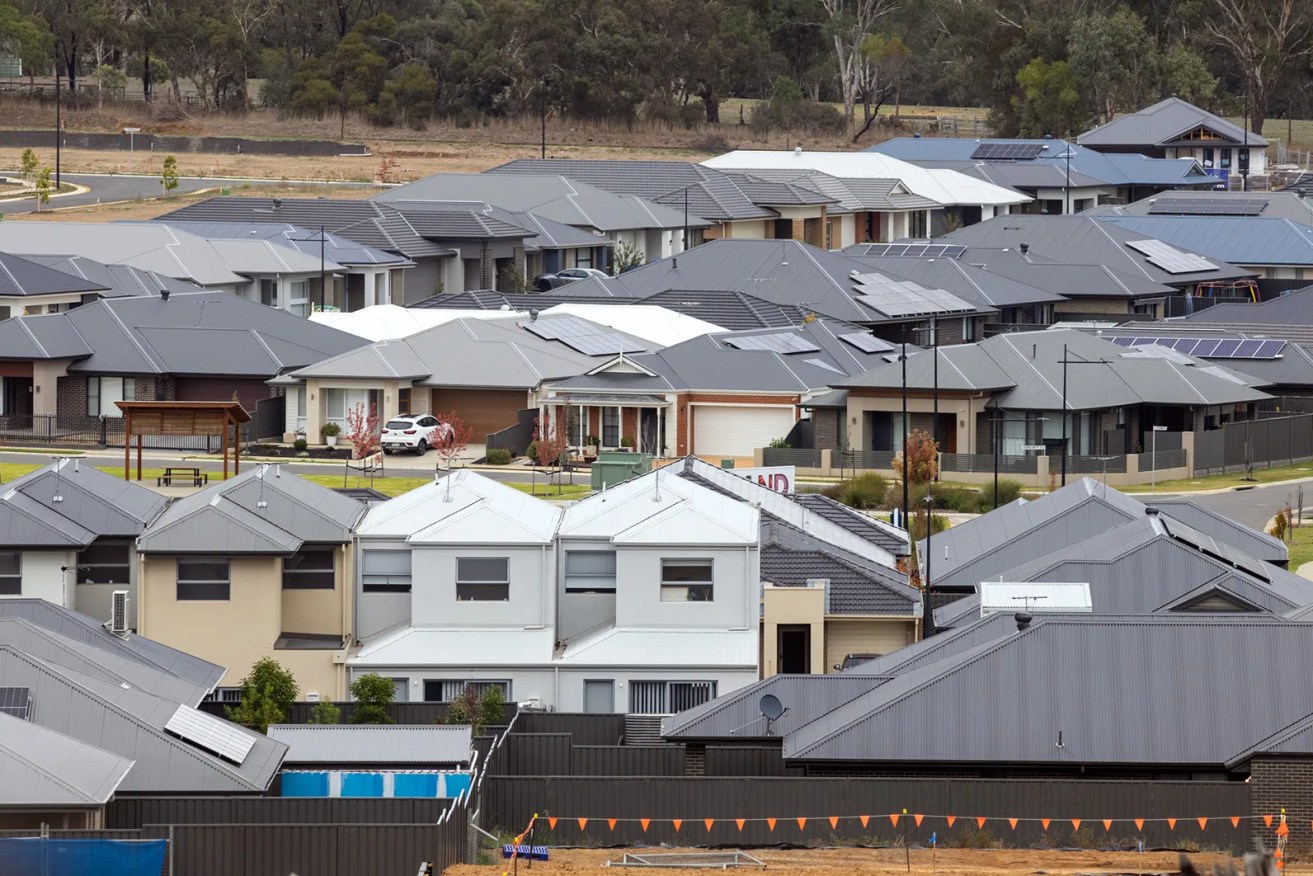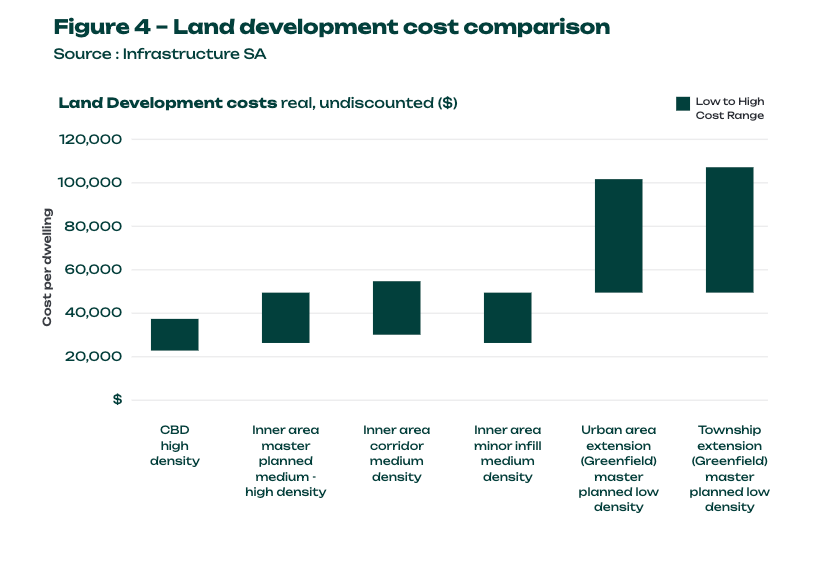State Govt’s numbers on infrastructure costs don’t add up
The State Government is relying on unrealistic data to compare the infrastructure costs of different types of development, from infill to greenfield, argues Liam Golding from the state’s urban development lobby.

Urban development on the edge of Mt Barker in the Adelaide Hills. Photo: Tony Lewis/InDaily
In the current housing affordability crisis, we simply cannot afford our vital discussion about where to develop housing for our future being derailed by projections of infrastructure costs that are poorly structured and just plain wrong.
The State Government has demonstrated clear recognition that increasing housing supply is central to tackling the affordability crisis — look no further than their commitment to unlock more than 25,000 parcels of land for development.
However, it is troubling that the current and much-needed discussion on where our future growth should occur is potentially at risk due to inaccurate modelling of infrastructure costs that could lead to perverse outcomes.
On housing supply, the Urban Development Institute in South Australia (UDIA) agrees with the State Government and strongly believes that we need greater opportunities for development of all types of housing: from masterplanned infill, to greenfield, to embracing innovative new housing models that can respond to the changing needs of a modern Adelaide.
Since the release of the Greater Adelaide Regional Plan Discussion Paper (GARP) it has been encouraging to hear that Minister for Planning, Housing and Urban Development, Nick Champion is open to discussion about where development can happen, but this discussion is made unnecessarily difficult when inaccurate data clouds the debate.
From the moment it was released, the table on page 95 of the discussion paper caught the attention of South Australia’s development community (see below). Several developers immediately pointed out that the costs quoted were unrealistic at best.

Developers are challenging the costs in this table produced by Infrastucture SA and included in the Greater Adelaide Regional Plan discussion paper.
To be clear, this is not a case of developers doubting the Government because they are calling for concessions — if the Government could guarantee infill infrastructure costs as quoted in the table they would sign up instantly.
The infrastructure costs in the table are based on a technical note prepared by Infrastructure SA. This four-page note summarised in the chart acknowledges that several costs have been excluded from the comparison because they do not apply to all projects and that the comparison for each development type is not identical.
The note states that high-density developments will typically have one to three bedrooms, medium density two to three bedrooms, and greenfield three to four bedrooms. Immediately it becomes clear we’re not comparing apples with apples.
Costs excluded from the comparison include demolition works and environmental issues, in particular contamination, that in the words of the Infrastructure SA note “are likely to be more prevalent in inner area locations and projects”.
While these costs are excluded, civil works, including all roads and stormwater within and intersecting with the development area, as well as earthworks, lot benching and retaining walls for lots, are included and can represent one of the largest costs for developers.
Once again, the choice to include costs for civil works skews the comparison in favour of infill over greenfield development.
It is imperative that the Greater Adelaide Regional Plan discussion paper is based on realistic data.
It should also be noted that many of the costs being described are costs met by the developers themselves, not the taxpayer, so notwithstanding the inaccuracy of the numbers, the table is not describing the relative cost to Government in any case.
While there is value in the Government having regard to efficiency in development, when it comes to infrastructure their focus should be on delivering major infrastructure works that unlock development instead of troubling themselves with the internal workings of individual projects on different sites.
The UDIA has reached out to the State Government and will continue to work with them to ensure the important work of the GARP is underpinned by accurate and relevant data.
While we have not received detailed costings for the infrastructure comparison, we have received an invitation to work with Infrastructure SA to better inform their work. This is an invitation the UDIA gladly accepts.
It is imperative that the Greater Adelaide Regional Plan discussion paper is based on realistic data. As the leading voice on land development in South Australia, the UDIA will provide the hard numbers needed to inform the right discussion about where our future homes should be built.
Liam Golding is chief executive of the Urban Development Institute of Australia (SA).




